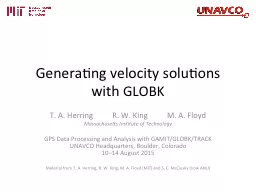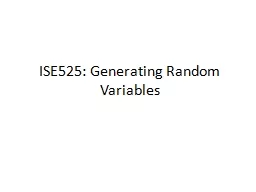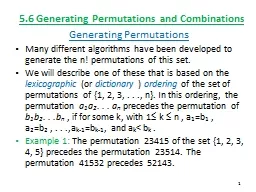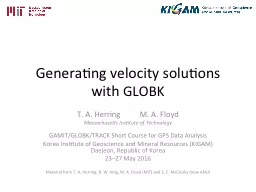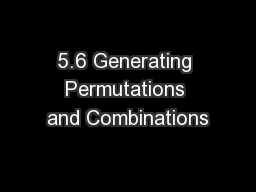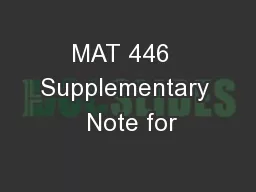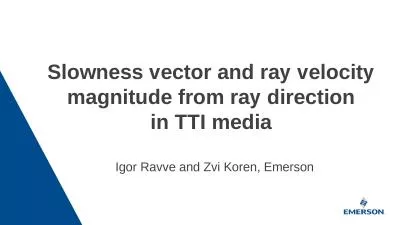PPT-Generating velocity solutions with
Author : trish-goza | Published Date : 2018-02-16
globk M Floyd K Palamartchouk Massachusetts Institute of Technology Newcastle University GAMITGLOBK course University of Bristol UK 1216 January 2015
Presentation Embed Code
Download Presentation
Download Presentation The PPT/PDF document "Generating velocity solutions with" is the property of its rightful owner. Permission is granted to download and print the materials on this website for personal, non-commercial use only, and to display it on your personal computer provided you do not modify the materials and that you retain all copyright notices contained in the materials. By downloading content from our website, you accept the terms of this agreement.
Generating velocity solutions with: Transcript
Download Rules Of Document
"Generating velocity solutions with"The content belongs to its owner. You may download and print it for personal use, without modification, and keep all copyright notices. By downloading, you agree to these terms.
Related Documents


